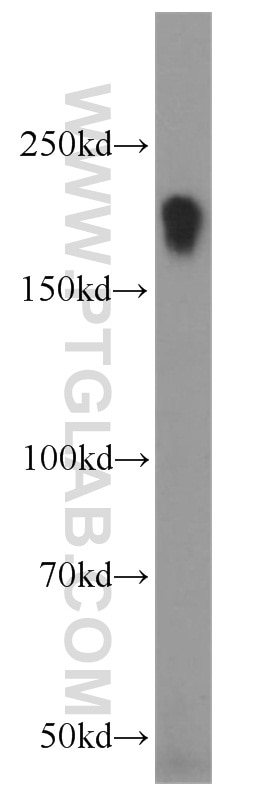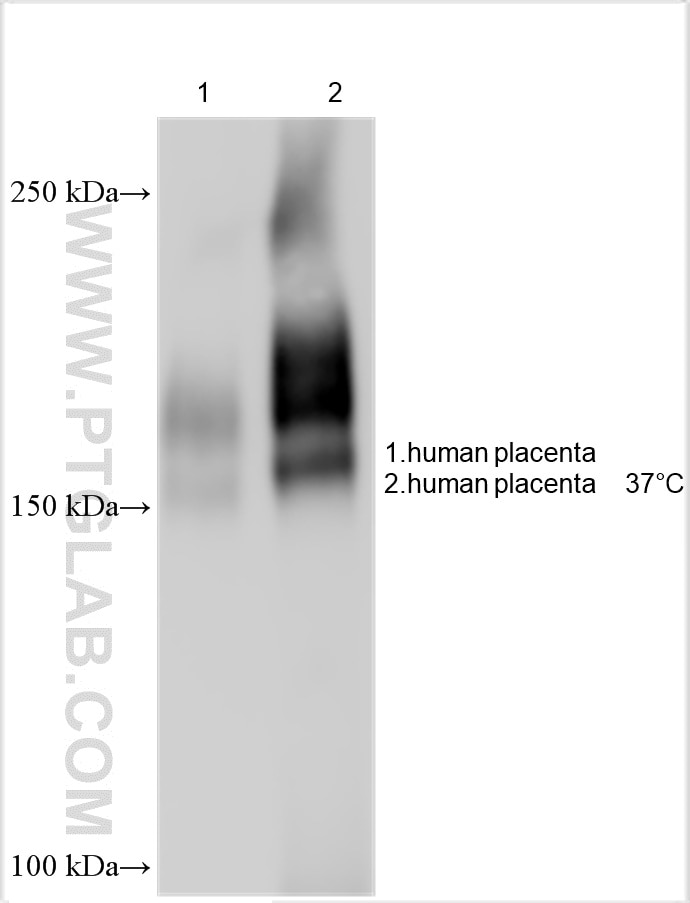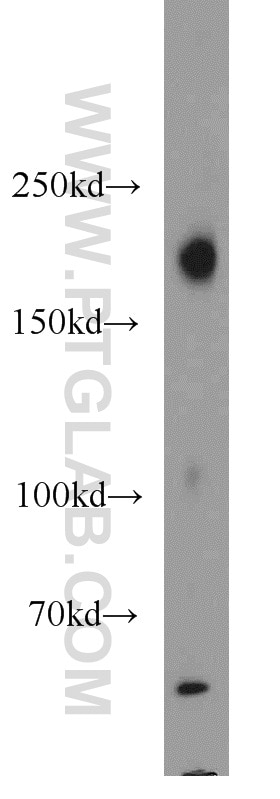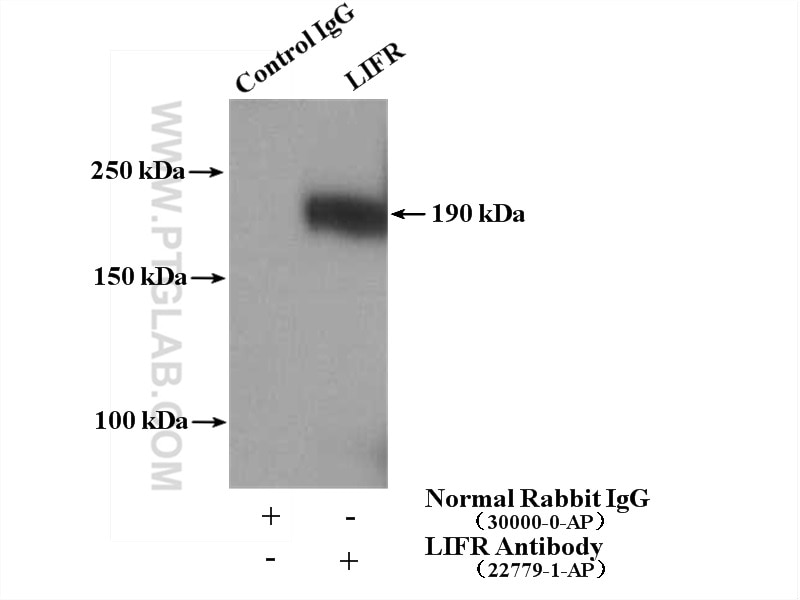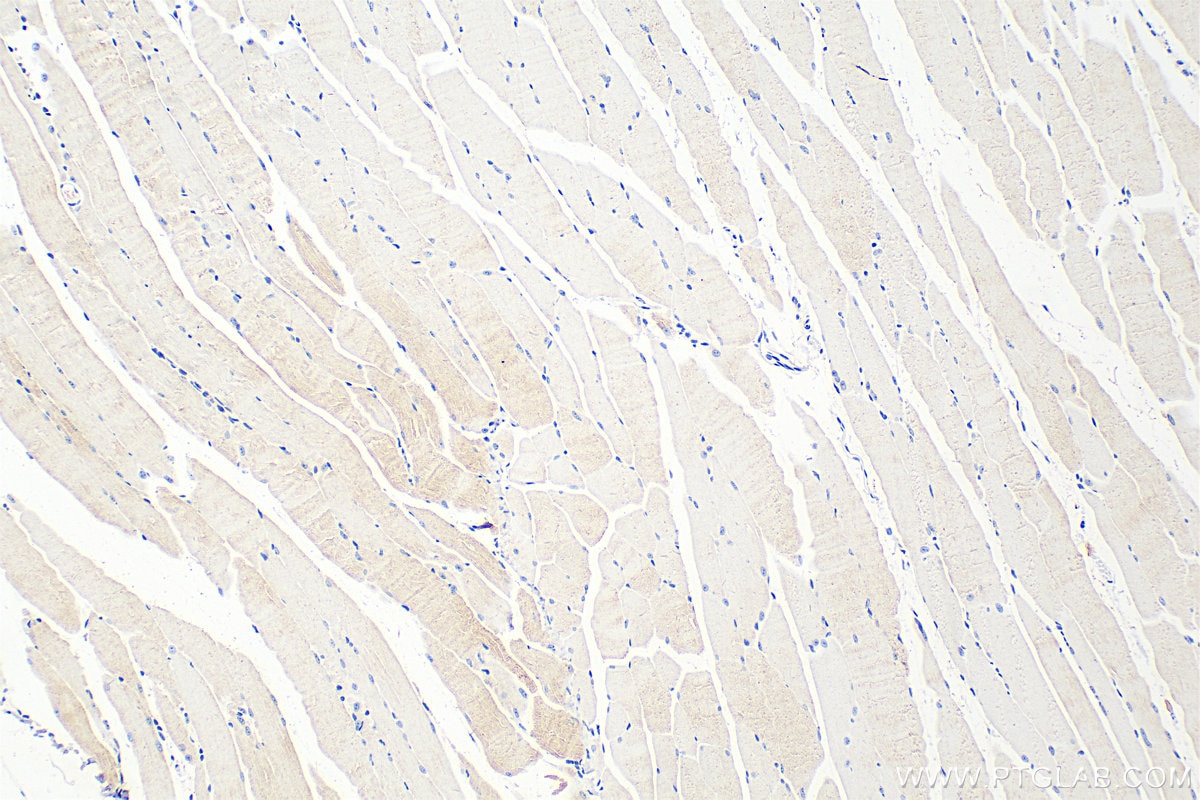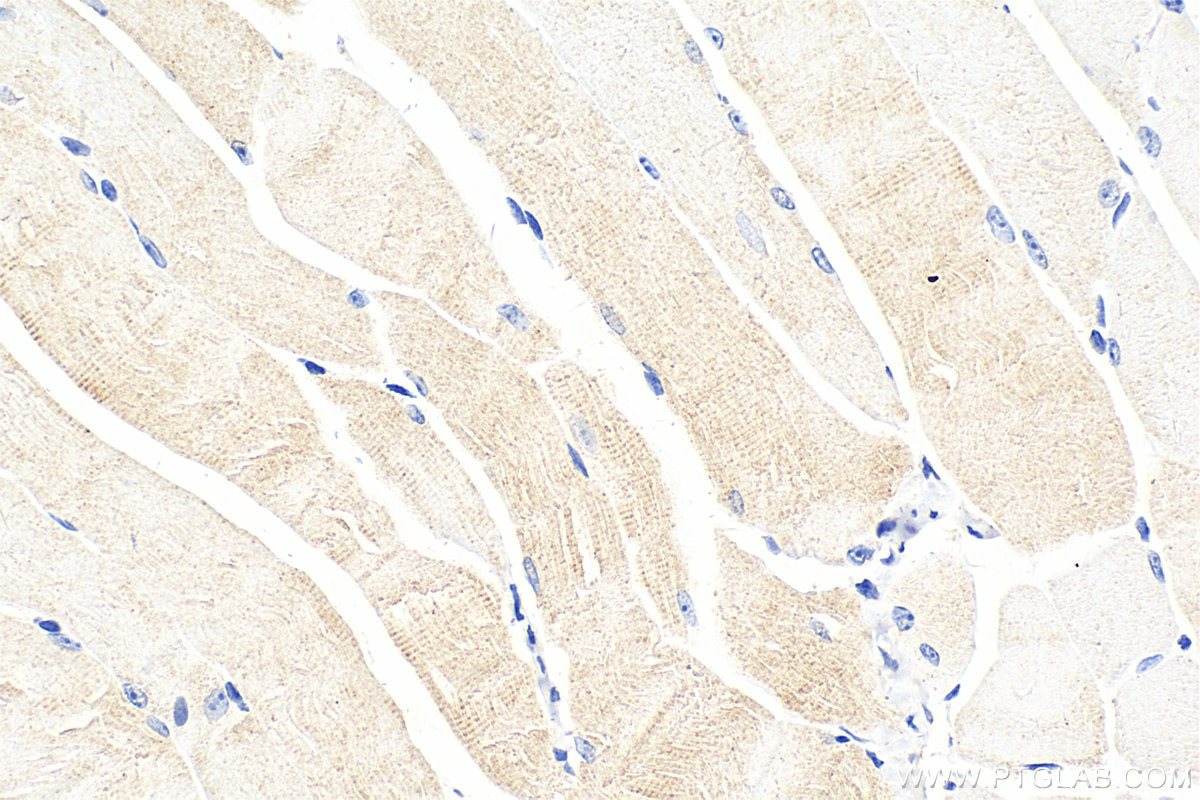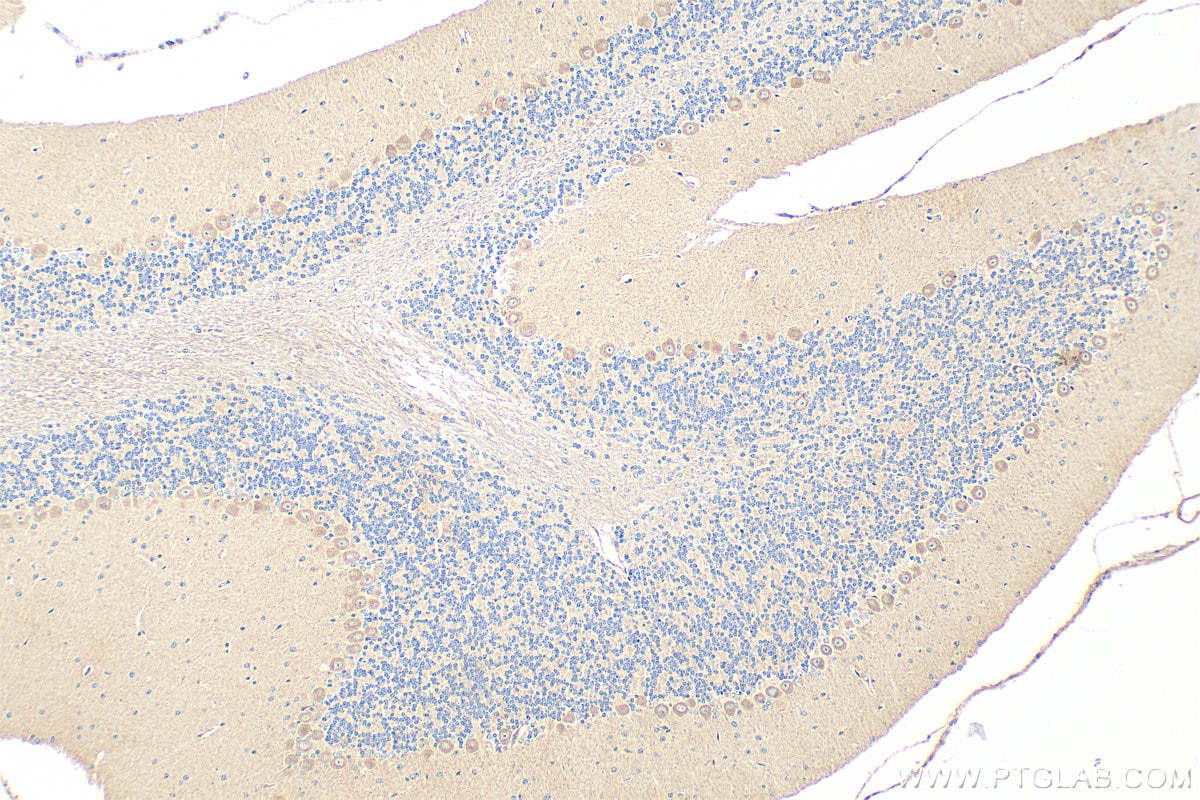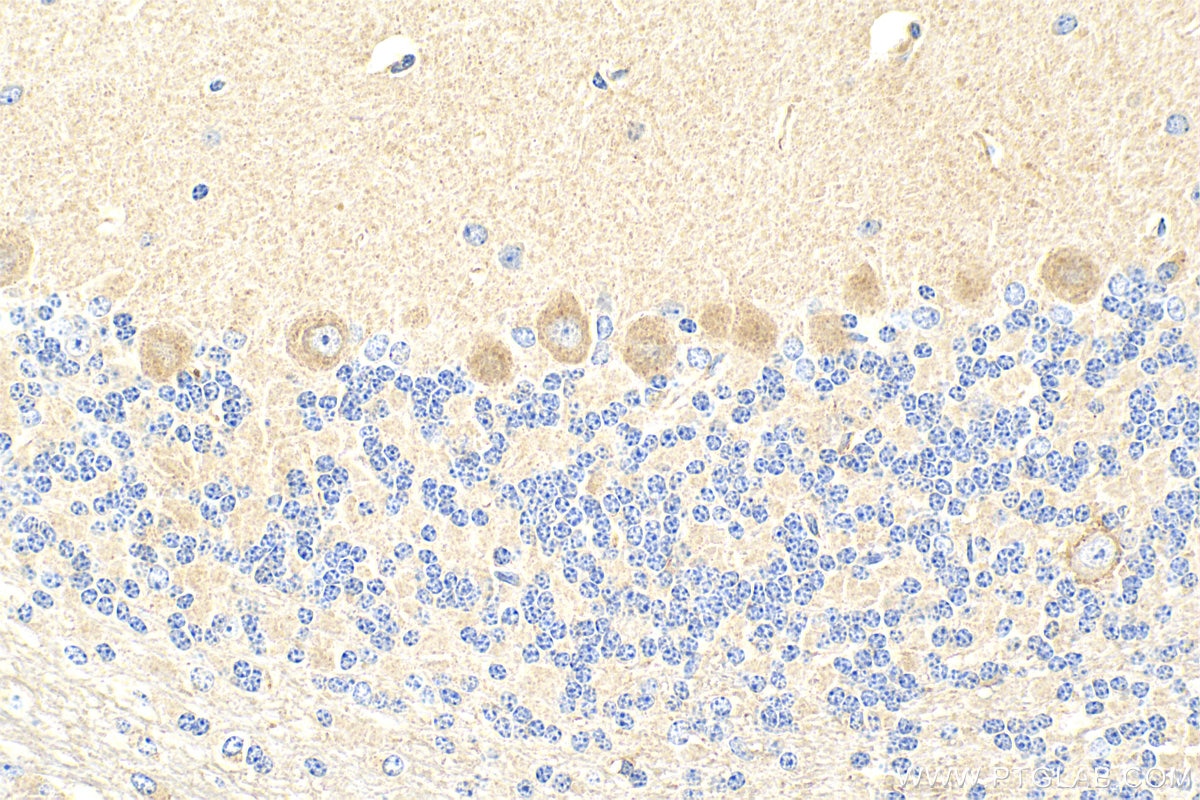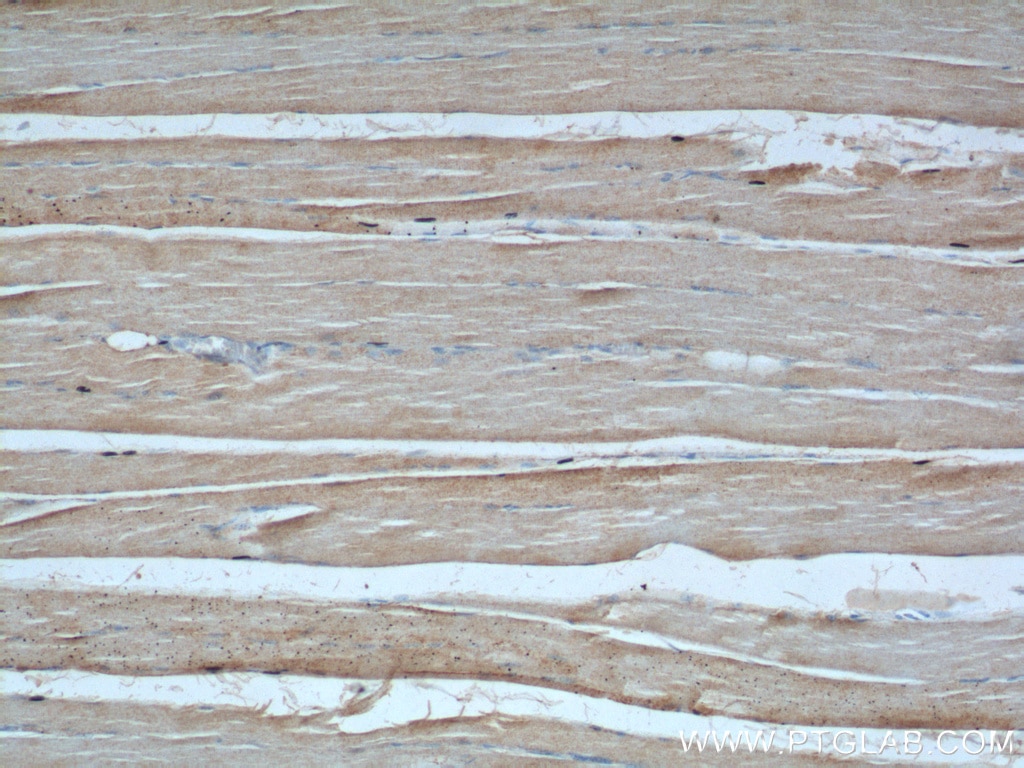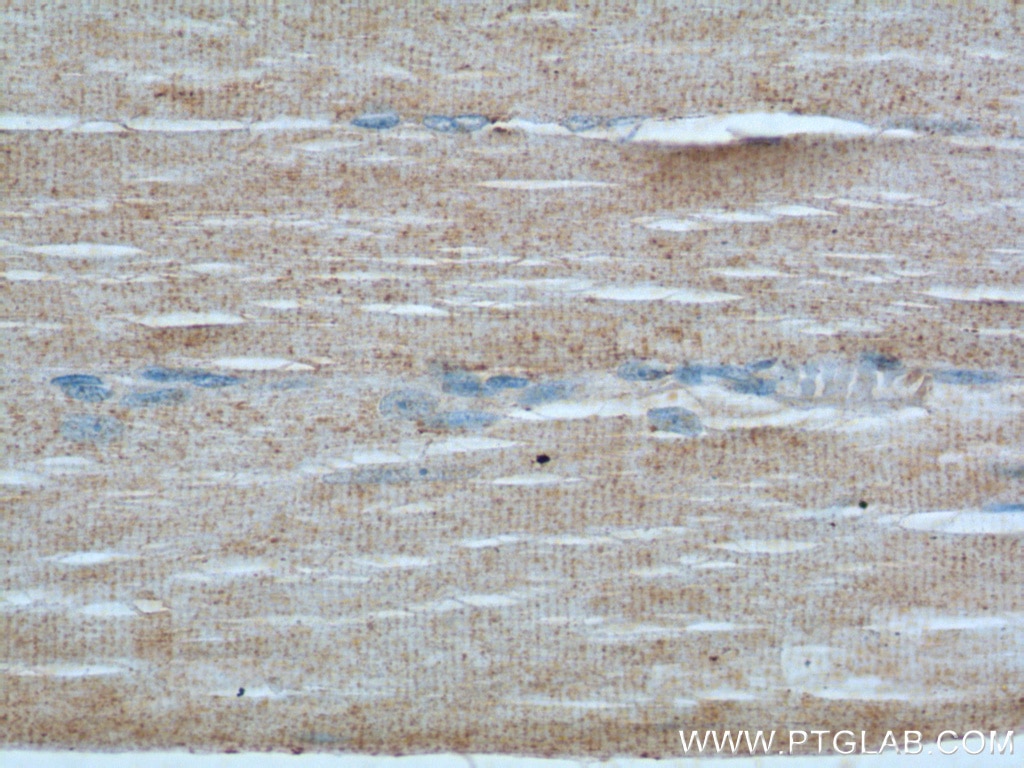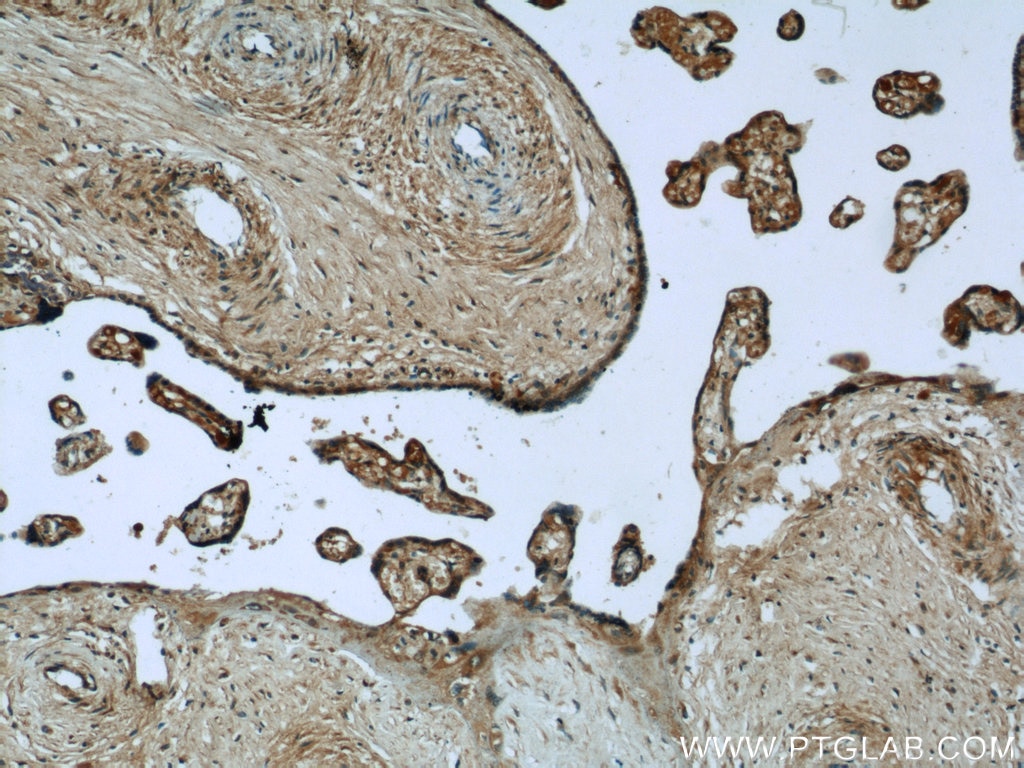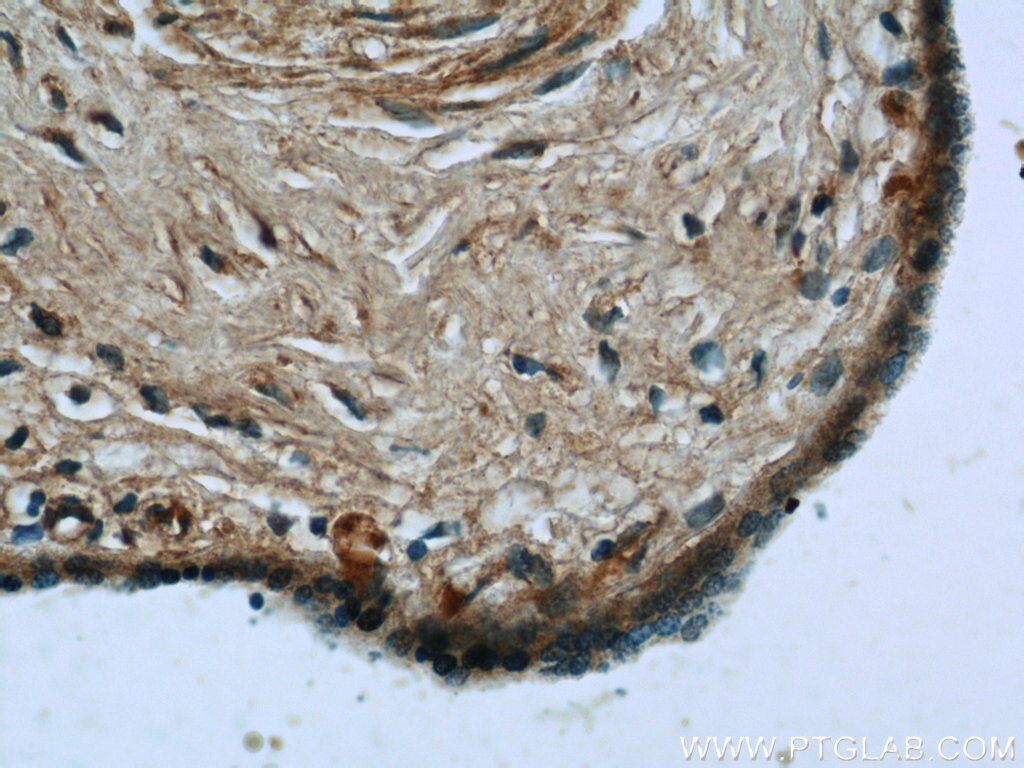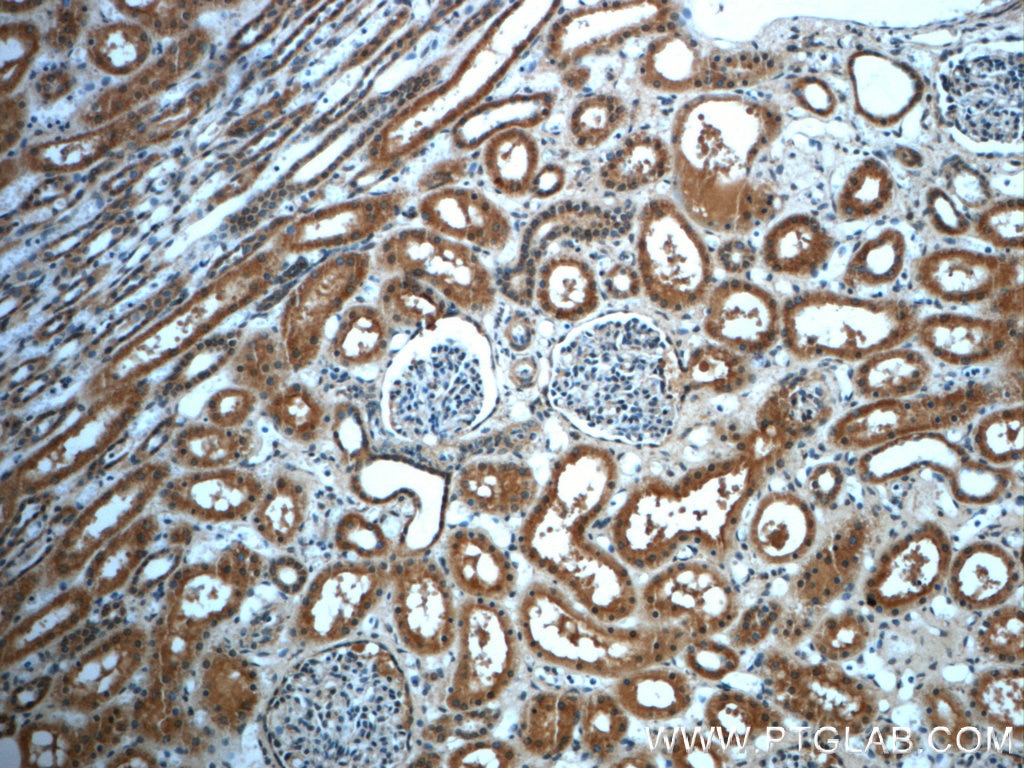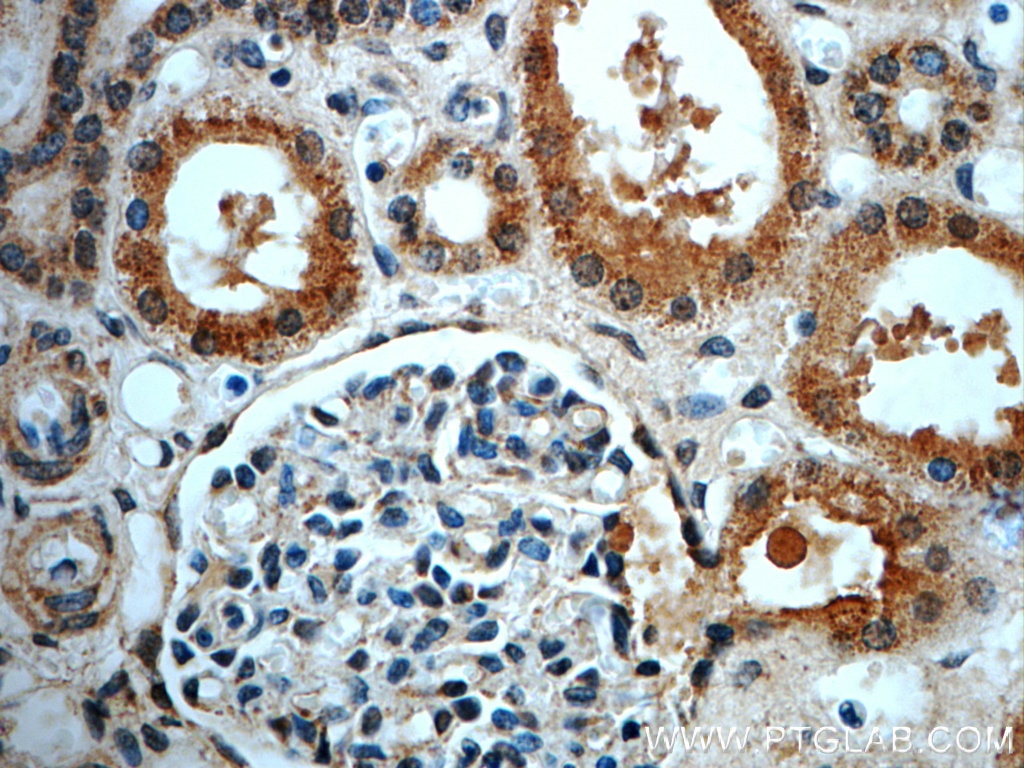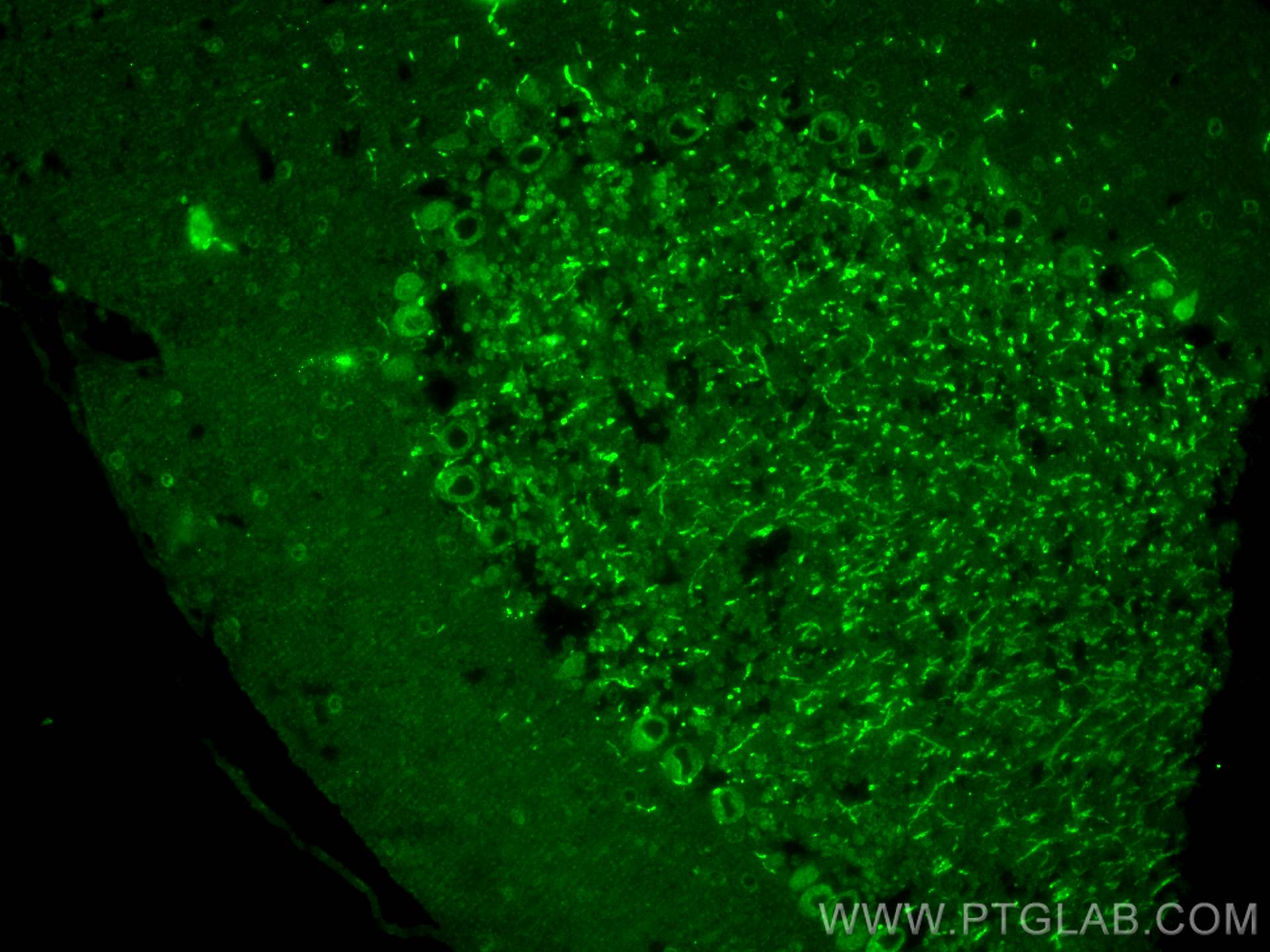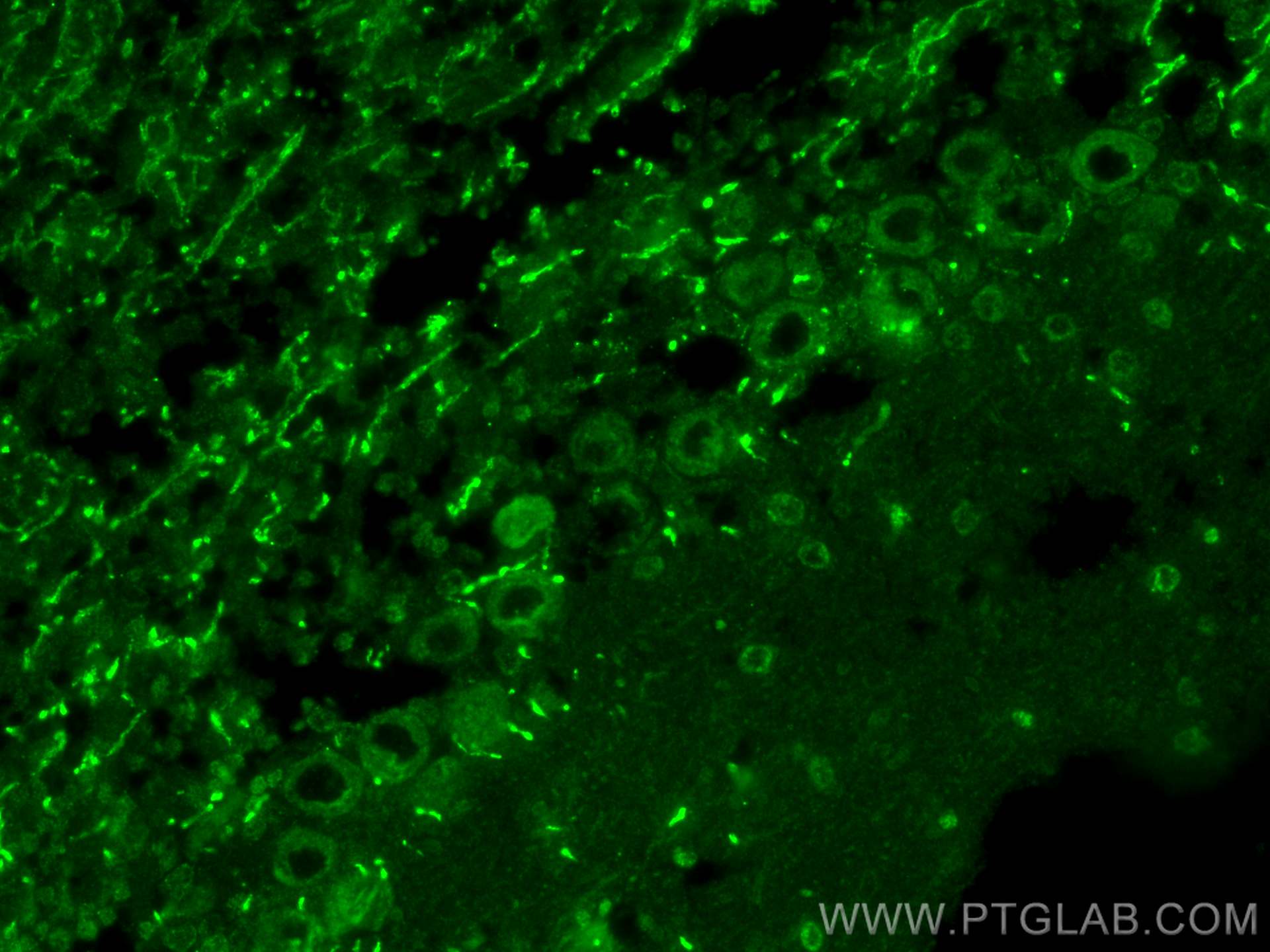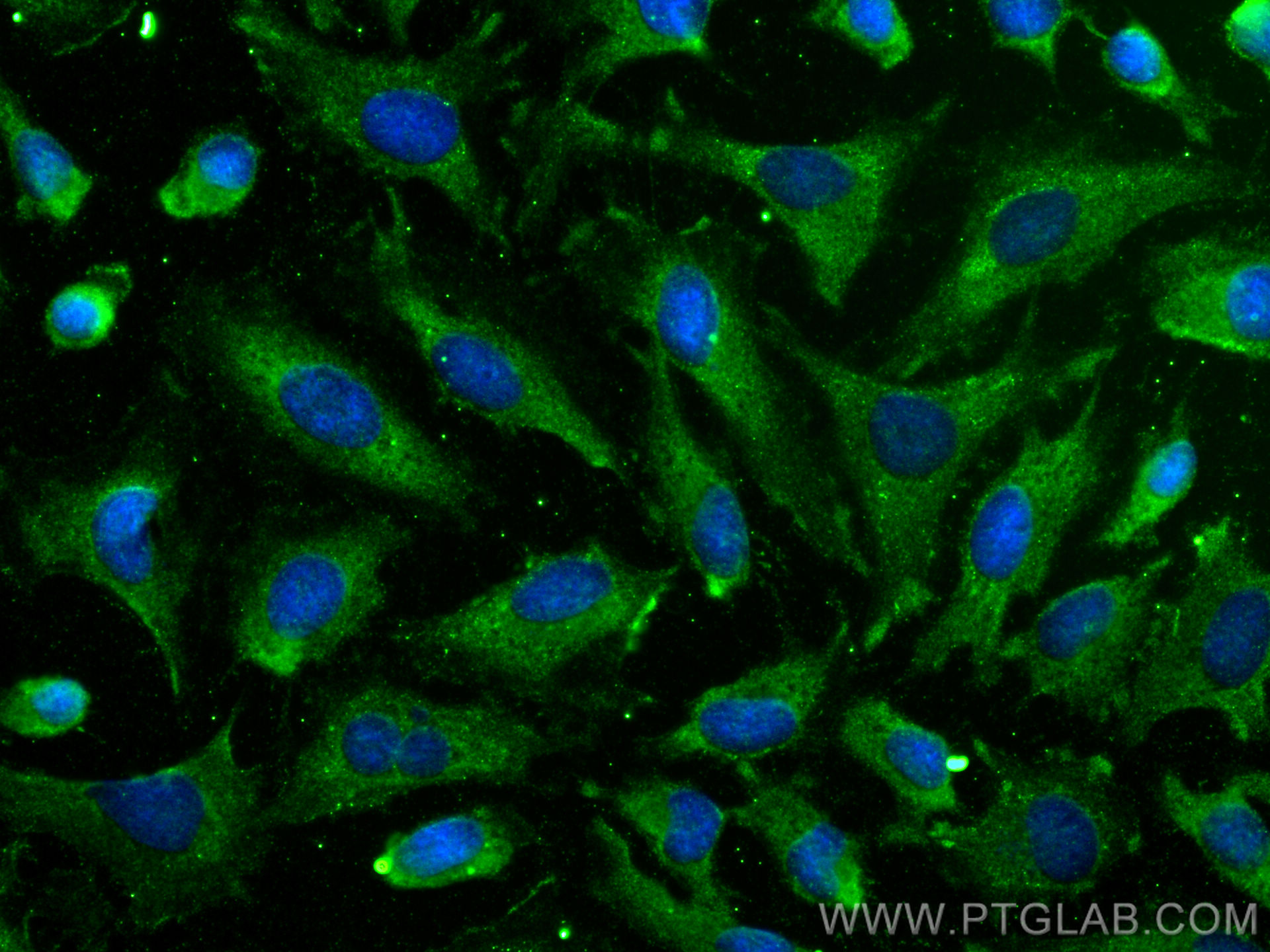- Phare
- Validé par KD/KO
Anticorps Polyclonal de lapin anti-LIFR
LIFR Polyclonal Antibody for WB, IHC, IF/ICC, IF-P, IP, ELISA
Hôte / Isotype
Lapin / IgG
Réactivité testée
Humain, souris et plus (1)
Applications
WB, IHC, IF/ICC, IF-P, IP, ELISA
Conjugaison
Non conjugué
N° de cat : 22779-1-AP
Synonymes
Galerie de données de validation
Applications testées
| Résultats positifs en WB | tissu de muscle squelettique humain, cellules HeLa, tissu de muscle squelettique de souris, tissu placentaire humain |
| Résultats positifs en IP | tissu de muscle squelettique de souris |
| Résultats positifs en IHC | tissu de muscle squelettique humain, tissu de cervelet de souris, tissu de muscle squelettique de souris, tissu placentaire humain, tissu rénal humain il est suggéré de démasquer l'antigène avec un tampon de TE buffer pH 9.0; (*) À défaut, 'le démasquage de l'antigène peut être 'effectué avec un tampon citrate pH 6,0. |
| Résultats positifs en IF-P | tissu de cervelet de souris, |
| Résultats positifs en IF/ICC | cellules HeLa, |
Dilution recommandée
| Application | Dilution |
|---|---|
| Western Blot (WB) | WB : 1:500-1:1000 |
| Immunoprécipitation (IP) | IP : 0.5-4.0 ug for 1.0-3.0 mg of total protein lysate |
| Immunohistochimie (IHC) | IHC : 1:50-1:500 |
| Immunofluorescence (IF)-P | IF-P : 1:50-1:500 |
| Immunofluorescence (IF)/ICC | IF/ICC : 1:200-1:800 |
| It is recommended that this reagent should be titrated in each testing system to obtain optimal results. | |
| Sample-dependent, check data in validation data gallery | |
Applications publiées
| KD/KO | See 1 publications below |
| WB | See 16 publications below |
| IHC | See 4 publications below |
| IF | See 5 publications below |
Informations sur le produit
22779-1-AP cible LIFR dans les applications de WB, IHC, IF/ICC, IF-P, IP, ELISA et montre une réactivité avec des échantillons Humain, souris
| Réactivité | Humain, souris |
| Réactivité citée | Humain, porc, souris |
| Hôte / Isotype | Lapin / IgG |
| Clonalité | Polyclonal |
| Type | Anticorps |
| Immunogène | LIFR Protéine recombinante Ag18742 |
| Nom complet | leukemia inhibitory factor receptor alpha |
| Masse moléculaire calculée | 1097 aa, 124 kDa |
| Poids moléculaire observé | 190 kDa, 170 kDa |
| Numéro d’acquisition GenBank | BC153096 |
| Symbole du gène | LIFR |
| Identification du gène (NCBI) | 3977 |
| Conjugaison | Non conjugué |
| Forme | Liquide |
| Méthode de purification | Purifié par affinité contre l'antigène |
| Tampon de stockage | PBS with 0.02% sodium azide and 50% glycerol |
| Conditions de stockage | Stocker à -20°C. Stable pendant un an après l'expédition. L'aliquotage n'est pas nécessaire pour le stockage à -20oC Les 20ul contiennent 0,1% de BSA. |
Informations générales
LIFR, also known as CD118, is a subunit of a receptor for leukemia inhibitory factor (LIF). LIF is a pleiotropic cytokine of the interleukin-6 family which affects the differentiation, survival, and proliferation of a wide variety of cells in the adult and the embryo. LIFR is the low-affinity binding chain that, together with the high-affinity converter subunit gp130, forms a high-affinity receptor complex that mediates the action of LIF. The high-affinity complex also binds a related cytokine, oncostatin M (PMID: 8999038). LIFR has also been identified as a breast cancer metastasis suppressor that functions through the HIPPO-YAP pathway (PMID: 23001183). LIFR appeared as doublets with 190 and 170 kDa (PMID: 10858440). They represented different glycosylated forms of the LIFR in different steps of protein maturation.
Protocole
| Product Specific Protocols | |
|---|---|
| WB protocol for LIFR antibody 22779-1-AP | Download protocol |
| IHC protocol for LIFR antibody 22779-1-AP | Download protocol |
| IF protocol for LIFR antibody 22779-1-AP | Download protocol |
| IP protocol for LIFR antibody 22779-1-AP | Download protocol |
| Standard Protocols | |
|---|---|
| Click here to view our Standard Protocols |
Publications
| Species | Application | Title |
|---|---|---|
Nat Metab LIFR regulates cholesterol-driven bidirectional hepatocyte-neutrophil cross-talk to promote liver regeneration | ||
Nat Commun A targetable LIFR-NF-κB-LCN2 axis controls liver tumorigenesis and vulnerability to ferroptosis.
| ||
Clin Transl Med Aptamer-SH2 superbinder-based targeted therapy for pancreatic ductal adenocarcinoma. | ||
Hum Mol Genet Mutations in the leukemia inhibitory factor receptor (LIFR) gene and Lifr deficiency cause urinary tract malformations. | ||
J Exp Clin Cancer Res miR-589 promotes gastric cancer aggressiveness by a LIFR-PI3K/AKT-c-Jun regulatory feedback loop. |
Avis
The reviews below have been submitted by verified Proteintech customers who received an incentive for providing their feedback.
FH Clarisse (Verified Customer) (12-12-2022) | Low signal, regardless of the method of fixation.
|
